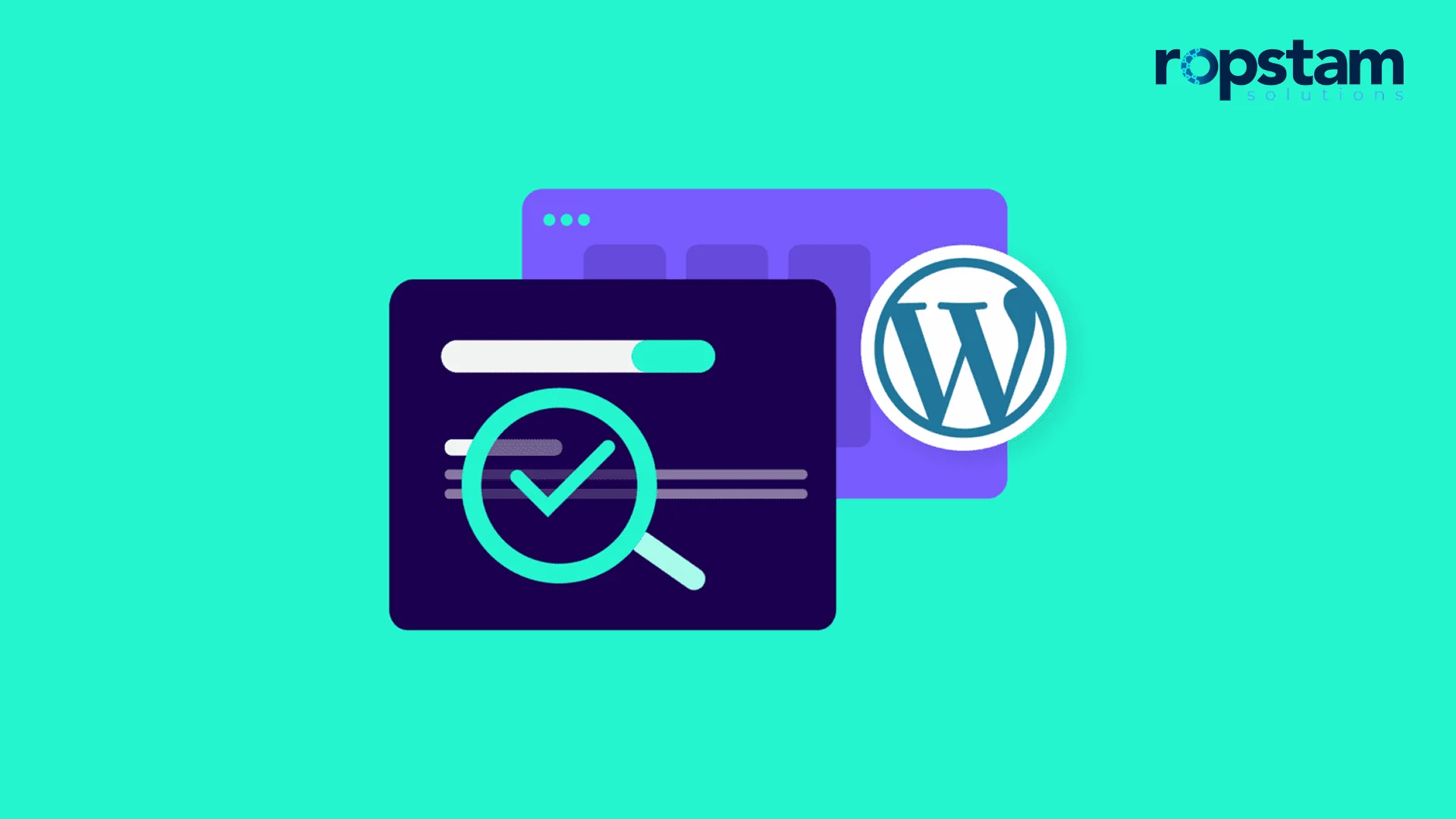Ecommerce website maintenance refers to the comprehensive process of keeping your online store in ideal condition. It’s essential to ensure that everything on your online store functions correctly and provides an exceptional shopping experience for your customers.
A well-furnished e-commerce site can be crucial for customer retention in this competitive playground. You can maintain your ecommerce store every week, every month, or every quarter depending on the size of your website and the purpose it serves.
The weekly, monthly, or quarterly maintenance of your ecommerce website includes essential tasks such as fixing broken links, updating software and plugins, reviewing website performance, conducting security checks, updating product prices, promotions, content, and more.
A well-managed website ensures good functionality, elevated engagement rates, and usability. To help you achieve this, we have compiled a comprehensive maintenance checklist for your e-commerce website.
Weekly e-commerce website maintenance checklist
Maintaining your e-commerce website every week will let you have a closer look at your online store issues. Weekly checking all the front-end and back-end functionality of your e-commerce site ensures a smooth buying procedure for your customers. With many services at work, carefully tracking your website’s functionality becomes crucial.
Fix broken links
A broken link is a hyperlink that leads to a non-existent page or resource of an ecommerce website. This typically occurs when the linked pages are deleted or relocated without proper redirection.
Broken links within your e-commerce site can deter customer confidence. This can be detrimental to your website’s integrity. In addition to adversely impacting user experience, broken links affect your Google search ranking and SEO scores. Outbound links are the most prone to becoming dead or broken redirects, as they might link to an expired domain or a deleted post.
You can use Google Search Console or tools like Ahrefs and SEMrush to help you audit your website and find broken links on your website. Regularly replacing and updating broken links can help retain your SEO ranking and customer reliability.
Update plugins
Ecommerce plugins are crucial add-ons for online stores, improving functionality and streamlining processes. These plugins, which include well-reputed platforms such as Shopify, cover a range of needs from inventory management to payment gateways, ultimately improving the overall user experience of a customer.
Scheduling regular updates for plugins and software ensures performance and minimizes security vulnerabilities. If you use a site builder like Squarespace or WordPress or an array of plugins, it’s important to stay on top of all the updates being rolled out.
Aside from critical security patches, these updates can include additional functionality and useful features. Using out-of-date plugins might also adversely impact the website’s responsiveness.
Periodically checking your plugins and software for updates is essential to ensuring maximum website functionality. Automating updates can help you better manage the process.
Ensure your forms work correctly
Forms for your e-commerce platform are fundamental in helping you gather data, be it potential client information or simply a mailing list subscription. You want to ensure that all your forms are working as they should at all times, both on the front end and the back end. You can do this by periodically running a manual test for all your forms. Go to your website and fill out the form.
Track and evaluate the entire process from the customer’s perspective and at the back end. You can weed out any discrepancies or irregularities that may exist. This could be a faulty ‘submit’ button or a missing check on one of the input fields. You can also use this opportunity to evaluate the user experience or design changes that may be required for your website better.
Perform regular data backups
A website backup is a duplicate of all your website’s data. To fully protect your online store, backups should include products, pages, themes, sales, categories, customer data, promotions, gift certificates, orders, blog posts, inventory, and more.
Scheduled backups of your ecommerce website are necessary. Data loss of any kind can be critical to your e-commerce business. With an ever-increasing cyber-attack risk, keeping your data as backup is crucial.
Administer a regular site-wide backup once a week before making any significant updates to your website. This ensures that you will have the most up-to-date version of your website to restore data from in case of any technical fault.
Monthly e-commerce website maintenance checklist
You can conduct a monthly evaluation of your e-commerce store to ensure that all your intended benchmarks are being met and that you are not leaving crucial user retention on the table due to a maintenance fault. Delivering the best user experience to your audience is important to ensure website retention. Additionally, you want to capitalize on your ecommerce website’s traffic.
Review your e-commerce website performance
Website performance can be tricky to optimize, but it can, in turn, boost your search engine visibility, increase retention, and help maximize lead generation and user interest. You can use a tool like Google Analytics to evaluate the performance of your website. Here are a few key analytics that you should monitor on your e-commerce store:
- Bounce rate
- Conversion rate
- Unusual spikes In page traffic
You can use this data to identify problem areas on your web pages. This is also your insight into what is driving traffic to your website. A spike in website traffic means a certain kind of content on a webpage attracts an audience; hence, you can capitalize on it. Concurrently, a high bounce rate could be caused by faulty redirects or slow-loading pages and requires mitigation.
Check e-commerce website security
E-commerce website security refers to a set of protocols designed to ensure that online transactions occur in a safe environment. These measures protect both company and customer data from threats such as data errors, phishing attacks, credit card fraud, hacking, and unprotected online services.
Security audits of your e-commerce website are vital, as a security breach could harm you and your customers. Compromised website security can deter customer confidence and mislead incoming traffic. It can also impact your search index.
You must ensure that all your security patches and SSL certificates are up to date. A delayed or missed security update can put your website and data at risk of cyber-attacks and privacy breaches for your customers.
Check your site load time
Page load time of your in e-commerce is the duration it takes for a web page to load and display its content to a user. This metric directly affects conversion rates, search engine rankings, and user experience.
The load time for your website is detrimental to many matches on your website. This includes the bounce rate, user experience, and Google search visibility. On average, a user prefers a website that can finish loading in under two seconds. On the contrary, Google’s preferred load time is less than half a second. Hence, optimizing the load speed for your website is essential.
Tools like Google Page Speed Insights let you check your site’s current load time, page speed, etc. If your load time is more than expected, you might want to minimize this time. Some ways to cut down site load time include:
- Reducing redirects
- Reducing image sizes
- Test browser(s) compatibility
Test your checkout process
An ecommerce checkout process is the procedure a customer goes through when purchasing items from an online store. This process begins once the customer adds items to their shopping cart and concludes with a purchase confirmation. The most effective checkout processes are smooth, ensuring a frictionless user experience.
Analyze your checkout process to ensure a smooth customer experience. A hassle-free checkout experience can boost customer confidence and retention.
Similar to evaluating content forms, you can manually go through the checkout process on your website to test the functionality and user experience. You want to make sure that the checkout process is intuitive and not redundant in any way.
Check for any broken links or missing information during the process. Moreover, take note of any design changes that may be key for increased conversions and user satisfaction.
Quarterly e-commerce website maintenance checklist
An up-to-date e-commerce site and fresh content are essential for customer engagement. It also helps boost search engine visibility, as a site with updated content is considered more relevant and authentic. A quarterly content audit and refurnishing can be a good performance booster for your e-commerce store.
Analyze your website to see what could be improved
Maximizing your e-commerce website’s usability can help you achieve your desired user metrics. To do so, you need to be aware of where and how you can improve the content on your website. Quarterly analyzing the content on your website can help you track areas of improvement. When analyzing your website, keep in mind the following aspects:
- Usability
- Responsiveness
- Visual impact
- Impact of CTAs
- Redundancies
Heatmaps can help you evaluate how well users respond to your current setup. This information lets you determine where and how to make changes and updates.
Promotions and price changes
You want to stay ahead of your market competitors, including product pricing and promotions. Periodically revamping your product pricing and promotions of your e-commerce website is important to help you stay relevant to current market trends and constantly offer your customers something unique.
Update website content
Once you have analyzed the content currently available on your website in terms of design and user experience, you can move on to optimizing content. This includes the text on your services pages, content pages, blogs, and all your site’s metadata. You can improve this content based on keyword searches that link to your business and on Google Trends as per Google Keywordanner and tools like SEMrush.
By doing so, you are simultaneously improving your search engine visibility and search index and providing updated content to your customers. An updated content page is more likely to retain customers than an outdated one.
Test your website on different browsers
Different browsers might view your sign differently. This includes text and image padding, alignments, and the responsiveness of the overall e-commerce webpage. E-commerce developers must test your website on the various browsers currently in use.
This will ensure that your users get the perfect experience no matter their browser. Moreover, browser updates can impact your e-commerce website’s usability, making it even more necessary to test your website on different browsers.
Why should you maintain your ecommerce website?
Effective website maintenance is critical to a flourishing ecommerce setup. Your website is your gateway to new customers, sales, and revenue. With a growing number of customers preferring online shopping over in-store shopping, the need for website maintenance is more significant than ever.
Having a well-maintained and up-to-date website ensures that your business stays relevant and provides exceptional user experience to your customers. An aptly maintained ecommerce website means:
- Better search visibility and ranking. Ensuring your website is well-ranked on search engines is essential. A well-ranked website can help you bring in more traffic through Google Search results, improving your website’s credibility and authenticity.
- Improved user experience. A website that provides a smooth and hassle-free user experience can be vital to tracking purchases and customer engagement. You want to make your customers find your website welcoming and intuitive to navigate.
- Better conversion rates. A well-maintained website ensures all redirects are working properly and have optimal load time. This helps increase conversion rates, as a faster and more responsive website is more likely to retain an audience and improve customer confidence.
How often should You perform e-commerce website maintenance?
Scheduling maintenance for your ecommerce website comes down to you and your team. It also depends on the type of e-commerce business you run, the size of your store, and number of installed plugins. Some aspects of website maintenance require updates and evaluation as frequently as every week, while others can wait for your quarterly maintenance check.
It would be best to have a well-established maintenance schedule, breaking down maintenance tasks by frequency: weekly, monthly, and quarterly.
Which areas of your business are affected by ecommerce store maintenance?
An ecommerce store depends on the website for its sales and revenue generation. Your website is the main face of your e-commerce business. Here are a few aspects of your business that it may impact:
Customer relationship:
It is detrimental to your customer relationship. A good website positively impacts the customers, and it is bound to have them returning to your business soon. Good user experience and updated content can help you strengthen your customer relationship.
Marketing:
Your website showcases your products and services to the world. It is your online catalog. Reaping the most from your content and online presence is crucial for your marketing strategy.
Scalability:
Introducing new products and services means adding them to your website as well. The website will house all product information; hence, scalability is crucial. Any new additions need to be reflected on your website so that your customers are not led astray by false advertisements or information.
What are the cons of not maintaining your e-commerce website?
A poorly maintained website can be hazardous to your ecommerce store. Here are a few reasons why:
- Can push away potential customers
- Negatively impact on search visibility
- Decline in user confidence
- Lower conversion rates
- Compromised website security
- Potential data loss
A well-rounded maintenance checklist is the first step to a well-maintained e-commerce website; the rest comes down to diligent follow-up and scheduling.
How can Ropstam help you with maintaining your e-commerce website?
E-commerce website maintenance can be intimidating, but it is also crucial for your business. Ropstam can provide you with a good e-commerce website requires proper maintenance, which can help boost sales and engagement and improve SEO results.
Ropstam understands that you may not always have the extra hands on deck to ensure diligent site maintenance. Fret not! Reach out to us at Ropstam Solutions for your website maintenance needs. Our reliable e-commerce development team guarantees thorough website maintenance for your ecommerce store. So reach out to us today, and let us take full responsibility for your website’s performance.














